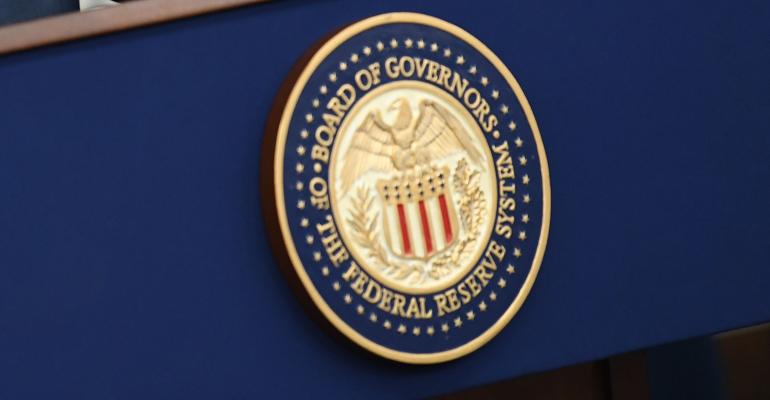(Bloomberg) -- The Federal Reserve took aggressive steps Thursday to ease what it called “temporary disruptions” in Treasuries, flooding the market with liquidity and widening its purchases of U.S. government securities in a measure that recalls the quantitative easing it used during the financial crisis.
The Federal Reserve Bank of New York said in a statement that the “changes are being made to address highly unusual disruptions in Treasury financing markets associated with the coronavirus outbreak” and had been done at the direction of Fed Chairman Jerome Powell in consultation with the Federal Open Market Committee.
Under the Fed’s existing program to buy $60 billion a month in securities, the purchases will be widened to include coupon-bearing notes across a range of maturities to match the maturity composition of the Treasury market, it said.
Treasuries resumed rising and stocks pared losses after the surprise announcement, made about 10 minutes before the bidding deadline for $16 billion auction of new 30-year bonds. The current 30-year yield quickly shed about 10 basis points to 1.25% ahead of the auction as investors absorbed the Fed’s muscular move.
“This is a full-blown crisis response operation, intended to make it abundantly clear that the Fed will not allow liquidity to dry up,” said Ian Shepherdson, chief economist of Pantheon Macroeconomics. “We expect the Fed to purchase $60 billion of securities across the spectrum for the foreseeable future: QE4 is here.”
In addition, the New York Fed offered $500 billion in a three-month repo operation and said it would repeat the exercise tomorrow, along with another $500 billion in a one-month operation, and continue on a weekly basis for the rest of the monthly calendar. This adds a massive jolt of liquidity to financial markets that will also expand the Fed’s balance sheet for the duration of the operations.
The Fed has been under increasing pressure to act as investors lost faith the U.S. government’s ability to quickly produce a coherent policy response after President Donald Trump addressed the nation Wednesday with few details on fiscal stimulus plans but restrictions on travel from Europe to the U.S. that deepened the sense of alarm.
“President Trump set out to calm everyone’s concerns, and he added fuel to the fire,” said Jack Ablin, chief investment officer of Cresset Capital Management, a Chicago-based wealth-management firm. “Right now, if you look at the technicals, we had finally slipped into what I’d call panic.”
U.S. central bankers delivered an emergency half percentage-point cut last week and were expected to move again when they meet on March 17-18 in Washington, if not sooner, with some economists predicting they could slash rates to zero from 1% to 1.25% at the moment.
“Fed did its part today of helping with market functioning,” said Priya Misra, head of rates strategy at TD Securities. “We still need the fiscal help.”
--With assistance from Elizabeth Stanton and Emily Barrett.
To contact the reporters on this story:
Matthew Boesler in New York at [email protected];
Eric Martin in Washington at [email protected];
Steve Matthews in Atlanta at [email protected]
To contact the editors responsible for this story:
Margaret Collins at [email protected]
Alister Bull





